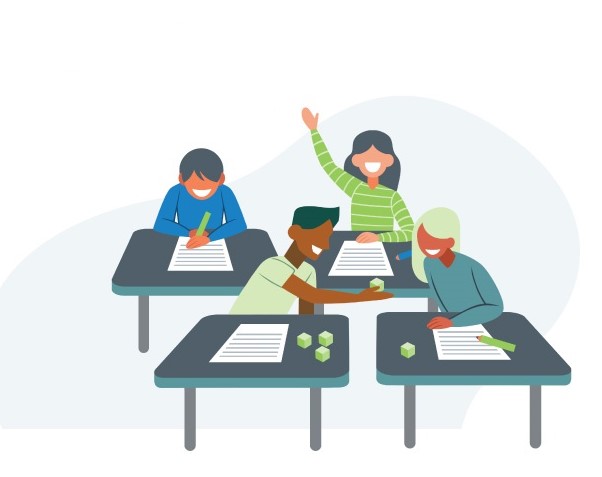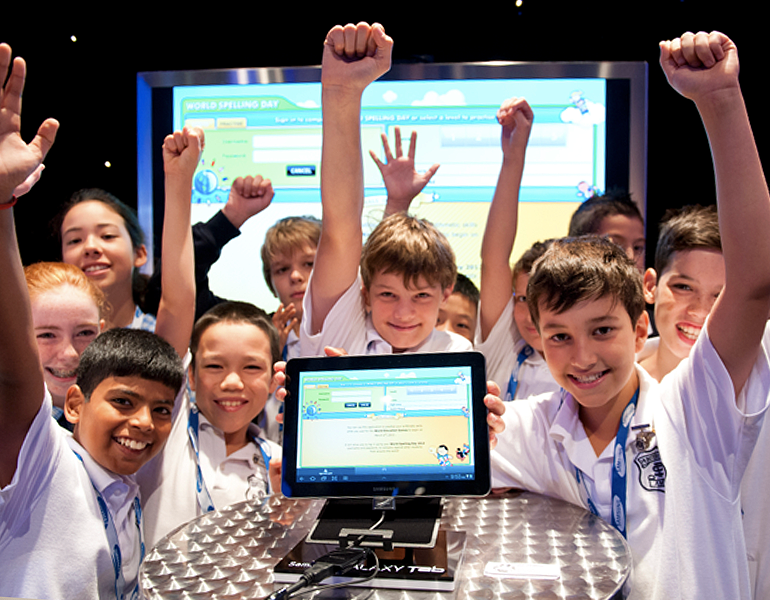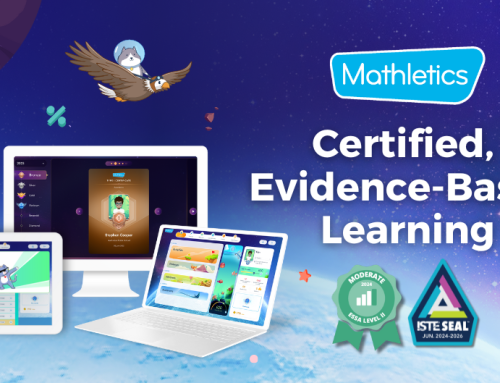Summer holidays glimmers in the near distance, but there are a few solid weeks of learning left to go yet.
And after the year we’ve had, student motivation, attention, and enthusiasm levels are harder to maintain than ever.
But before you reach for the closest DVD, try these 10 fun, end of year learning opportunities to keep your students engaged with mathematics – right up to the last day.
Mathematics Bingo
Liven things up with a game of Bingo! Here’s how you adapt it for mathematics:
- Have students create their own Bingo cards by filling a table with numbers or unsolved equations, depending on their ability. Just make sure the values only extend to 30, so they correspond with the numbers you draw out.
- Draw numbers 1–30 out of a box.
- Students circle each drawn number that appears on their card, calling “Bingo!” when they’ve circled every number.
Tip: write the numbers on ping pong balls and shake them around in a basket to get the full effect. You might even like to nominate a student as the Bingo host!
Mathematical Scavenger Hunts
If your students need a break from the classroom, send them on a hunt for mathematical items around the school. For example, you might task them with finding:
- a five-sided shape
- a tessellating pattern
- a number that contains three digits that are multiples of 3
- an acute angle
- a convex and a concave shape.
You can combine these instructions with a list of clues and put students into scavenger groups. Turn it into a competition with a reward for the first group that ticks off every clue!
Handprint Times Tables
Have students dip their hands in washable paint, and then use the handprints to visually represent times tables on a large sheet of paper.
They can start with two fingers (for 2× tables), and then move their way up to their whole hand for 5× tables.
Tip: It’s going to get messy! Give students some smocks and use the art room if you can.
Or try these multiplication tricks with your class!
Mathematical Hopscotch
Draw a hopscotch with the numbers 1–9 and mathematical symbols (plus, minus, divide) on the pavement with chalk.
Have one student jump between the squares as they call out an unfinished number sentence (e.g. 9 + 7).
The next student jumps onto the correct answer before jumping out a question of their own.
Rotate through the whole class and measure their longest streak of correct answers!
Place Value Hoops
Put three small hoops at varying distances from a throwing line, and label the furthest “hundreds”, the middle one “tens”, and the closest “ones”. Students then throw beanbags into these to score the place values.
To ramp up the challenge, have them compete against one another in a set amount of time. When the clock counts down, they’ll have to decide whether they shoot furthest for the hundreds, or scramble to make up points from the tens and ones!
Picture Pie
This is a fun way for students to get creative with fractions. Here’s how it works:
- Have students draw circles with a compass or trace them onto colored card.
- Ask them to cut the circles out with safety scissors.
- Fold the circles and then cut along the lines to create fractional portions. Help your students label them as halves, quarters, and so on.
- Students create an artwork or pattern by arranging and gluing the portions on a separate sheet. See what they can come up with!
Tip: cut up different craft materials, such as foil and cellophane, to make it even more colorful.
Dice Jeopardy
All it takes is a single dice, but this game will have students wide-eyed with suspense as they add their way to 100 points. The rules are simple:
- Students take turns rolling a dice, adding up their results. They can keep rolling and racking up points for as long as they like, with the first person to reach 100 being the winner.
- But there is a catch. If they roll a 1, they score 0 points on that turn.
- Each turn, players have a choice. Do they take their points while they still have them, or keep rolling at the risk of losing them all?
Tip: Dice Jeopardy can be used to practice multiplication, too. Use two dice and bump the target score up to 500.
Random Number Generator
This is a quick and easy game that develops your students’ place value knowledge.
It’s also one they can do on their own.
- Students draw five adjoining boxes and label them with their place value (tens, hundreds, thousands etc.)
- Draw a random number from 1–9 out of a hat.
- Students decide which box to write the number in. Once they’ve put it in a particular place value, they can’t change it.
- Do this five times and see who can produce the biggest number.
Your students will have to make some quick decisions to maximise their chances of getting the highest number. Do they fill the highest place value with the first digit larger than 5 that comes up, or do they wait for something bigger?
Tip: you can also turn this into a probability game if your students are older. For example, what’s the probability of the final digit being a 9?
Number Line Races
This is best done as a group activity so every student gets a turn.
- Have each group draw a number line from 1–20 on the pavement in chalk.
- Each group writes + and – symbols on separate pieces of paper and put them into a hat. Have them also write the numbers 1–3 on pieces of paper and place them into a separate hat.
- The first student stands at 10 on the number line. Their peers draw a symbol from the hat, followed by a number, to determine how many steps they take forward or back.
- Have them compete with another group to see who can reach 20 first!
Maintain the learning momentum (but give yourself a break too)
Fighting to keep your students engaged through the final weeks might sound like it requires time and energy you don’t have after the year that was.
But it doesn’t have to be hard. An online learning program can keep your students engaged with rich, curriculum-aligned mathematics activities without creating extra work for you.
In Mathletics, for example:
- Curriculum-aligned activities are automatically assigned to students as they work at their own pace
- Student work is marked automatically, so all you need to do is look at the results
- Find a library of over 700 curriculum-aligned problem-solving questions, plus printable resources for Years K–8, so you don’t have to create your own
Your students will love the engaging, gamified features of the program like Live Mathletics and Multiverse.
You’ll love the way it gives you back the time and energy you need to focus on:
- end-of-year reports
- forward planning
- yourself – you’ve earned it!
See how one school used Mathletics to help reduce teachers’ workloads.








